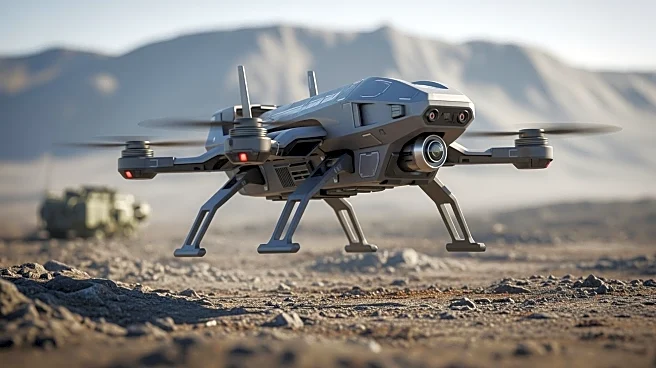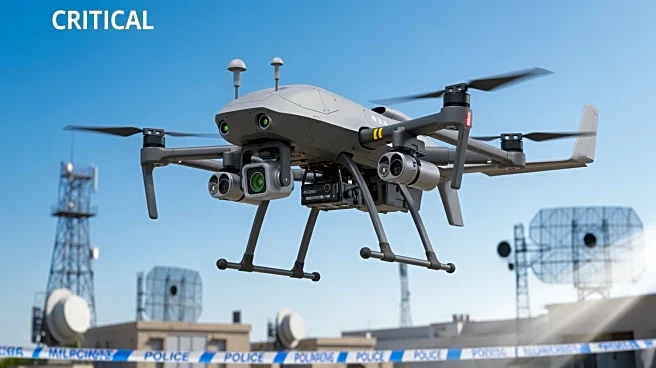What's Happening?
Performance Drone Works (PDW) has been awarded its first contract with the U.S. Air Force for the C100 multi-mission Unmanned Aerial System (UAS). The contract was granted by the 93rd Air Ground Operations
Wing (AGOW) at Moody Air Force Base, Georgia. This marks a significant milestone for PDW in its expansion within the U.S. Department of Defense. The C100 is a Group 2 UAS known for its agility, endurance, and tactical flexibility, capable of 74-minute flight times, speeds up to 40 mph, and an operational range over 10 kilometers. It features a modular architecture and multi-domain command and control, suitable for Intelligence, Surveillance, and Reconnaissance (ISR), electronic warfare, and kinetic effects missions. Ryan Gury, CEO and co-founder of PDW, emphasized the Air Force's need for advanced, modular solutions to address gaps in deployable aerial platforms, highlighting the C100's adaptability and performance.
Why It's Important?
The contract with the U.S. Air Force signifies a strategic advancement for PDW, potentially enhancing the Air Force's operational capabilities with the C100's modular and adaptable design. This development could lead to improved mission effectiveness in diverse operational domains, including ISR and electronic warfare. The C100's ability to rapidly adapt to evolving threats offers the Air Force a tactical edge, crucial for maintaining superiority in global operations. PDW's success in securing this contract also reflects its growing influence and capability within the defense sector, potentially leading to further collaborations and innovations in military technology.
What's Next?
Following this contract, PDW may continue to expand its presence within the U.S. military, potentially securing additional contracts and collaborations. The Air Force's integration of the C100 could lead to further evaluations and deployments across various missions, enhancing its tactical operations. PDW's involvement in other military programs, such as the Medium Range Reconnaissance (MRR) program, suggests ongoing opportunities for growth and innovation in defense technology. Stakeholders, including military leaders and defense contractors, will likely monitor the C100's performance and adaptability in real-world scenarios.
Beyond the Headlines
The introduction of the C100 UAS into the Air Force's operations may influence broader military strategies, emphasizing modular and adaptable systems. This shift could lead to changes in procurement policies and operational doctrines, prioritizing flexibility and rapid response capabilities. The C100's success may also drive innovation in drone technology, encouraging other companies to develop similar systems, potentially transforming aerial warfare and surveillance tactics.












